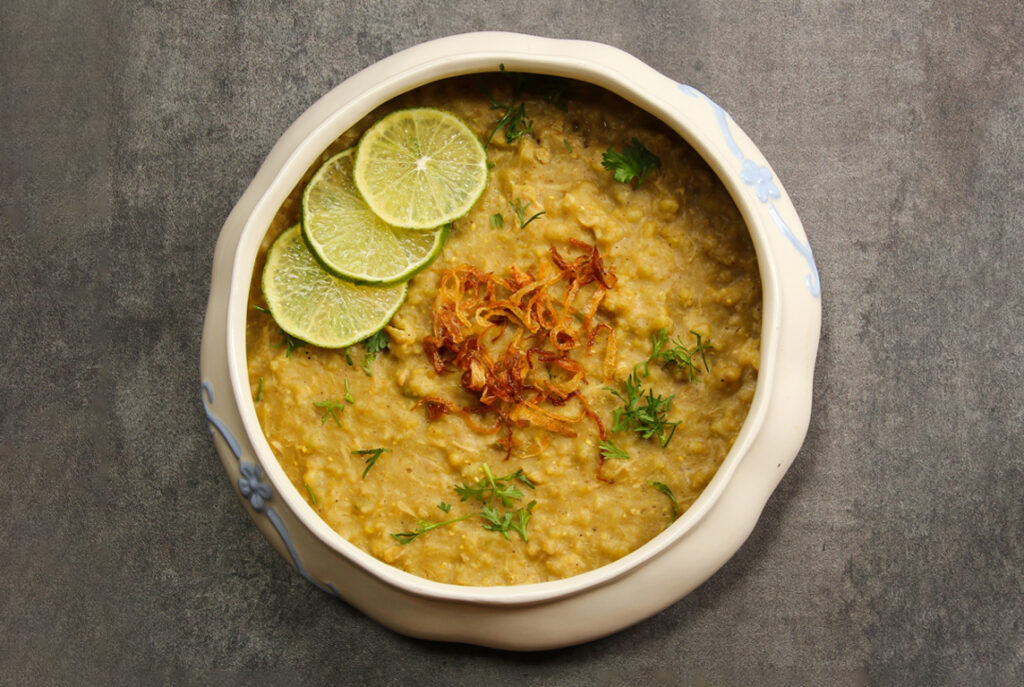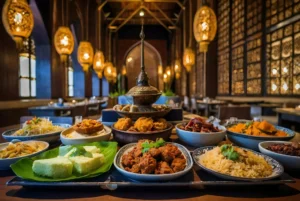From the Cauldron to Your Plate: The Irresistible Taste of Haleem
Food lovers worldwide have fallen in love with and been addicted to the dish Haleem because it is so delicious and enticing. This substantial, decadent treat has its roots in the rich culinary tradition of the Indian subcontinent, particularly in Pakistan and some regions of India. One dish that epitomizes comfort cuisine at its best is haleem, which is loved by people of all ages and frequently eaten on special occasions.
Haleem is a slow-cooked culinary masterpiece made primarily of beef, lentils, and wheat. These haleem ingredients are simmered for several hours at a low temperature in a cauldron-like vessel. This method of long cooking enables the flavors to converge, producing a thick and creamy texture that is pleasant and comforting.
Table of Contents
What is Haleem- history of the dish
Trace the origins of Haleem back to the Middle Ages, which are thought to have begun in the Arabian Peninsula. It eventually arrived on the Indian subcontinent and was crucial to Mughlai cuisine. Haleem became more well-liked in Hyderabad, India, before eventually gaining fame elsewhere, including Pakistan. Haleem still has a particular position in Pakistani cooking today, with variations that suit various palates.
Haleem is more than just food; it celebrates heritage, culture, and group happiness. It is frequently served at festive events and enjoyed by friends and family. Haleem’s flavors invoke nostalgia and bring people together, fostering lifelong memories.
Savoring Haleem is a culinary experience unlike any other, whether you create it at home or eat it out. Haleem is a delicious sensory treat thanks to its rich flavors, slow-cooked textures, and aromatic spices. Let the flavors carry you to a world of unadulterated gastronomic delight when you serve it with naan, rice, or your preferred garnishes.
Pakistani Haleem and the masala in it
Haleem from Pakistan is a delicacy with a particular place in food lovers’ hearts and mouths. Pakistani haleem is renowned for its bold and deep flavors, showcasing the ideal balance of spices, meat, grains, and lentils. Haleem prepared in this region has a distinctive flavor firmly anchored in Pakistani culture and traditions. The slow-cooked texture, the flavorful combination of spices, and the soft meat produce a comforting and decadent dish. Pakistani Haleem captures taste buds with its alluring charm and accurately represents the nation’s culinary prowess.
Types of Haleem
There are several types of Haleem to investigate. Beef Haleem and Chicken Haleem are two common varieties.
With tender chicken chunks bringing a subtle flavor to the meal, chicken haleem gives the traditional recipe a lighter variation.
The traditional Haleem dish, Beef Haleem, on the other hand, is renowned for its hearty and savory undertones that harmonize beautifully with the grains and lentils.
The mesmerizing flavor of Haleem
Haleem masala, a concoction of fragrant spices, is essential for bringing out the mesmerizing flavors of Haleem. Cloves, cinnamon, cardamom, cumin, coriander, nutmeg, and other spices are included in this particular blend. The Haleem masala gives the meal depth and complexity, giving it an appealing perfume as it simmers on the stove. Before being grilled to perfection, the meat is frequently marinated in the masala for an entire night to let it absorb the flavors.
Wheat or barley, lentils, and ghee are the main components that distinguish Haleem. The grains are soaked and cooked until they become mushy and soft, adding to the dish’s creamy texture. When cooked with grains, lentils—such as split chickpeas and yellow lentils—add more protein and thickness. Haleem’s richness and flavor are enhanced by the liberal use of ghee, which is clarified butter.
Conclusion
Haleem is a culinary masterpiece that exemplifies the rich history and variety of flavors of the Indian subcontinent. It is more than just a simple dish, to put it bluntly. Each mouthful is a monument to the centuries-old tradition and the dedication of those who have perfected this recipe, whether you choose to indulge in the traditional Beef Haleem or savor Chicken Haleem. Therefore, the next time
You can immerse yourself in Haleem’s delicious flavor and embark on a culinary adventure that will leave you wanting more.







